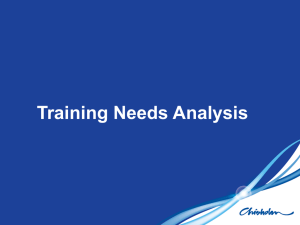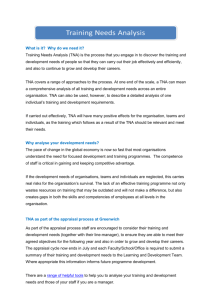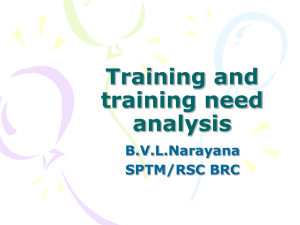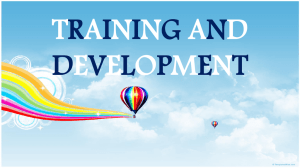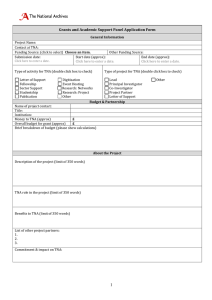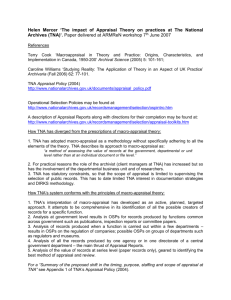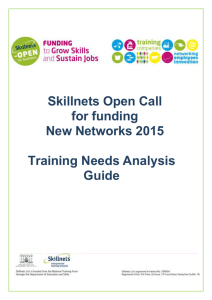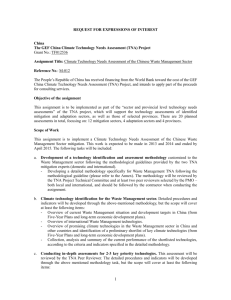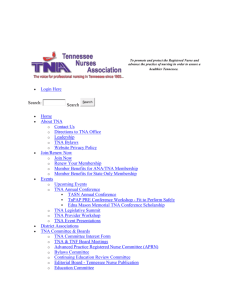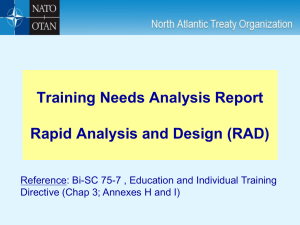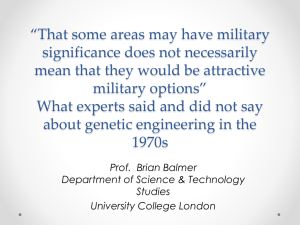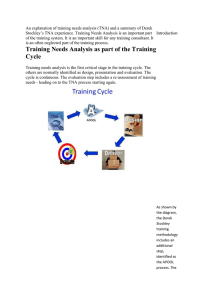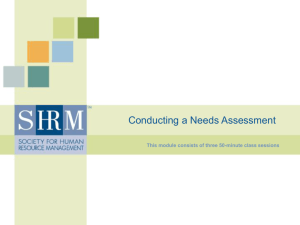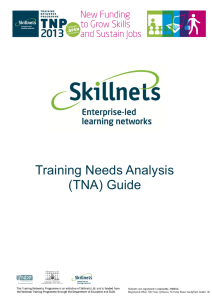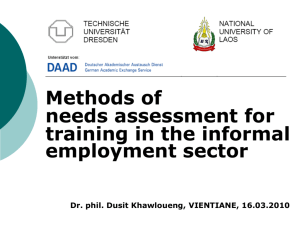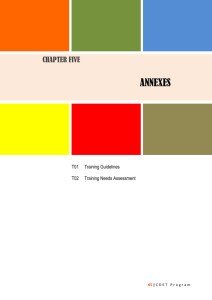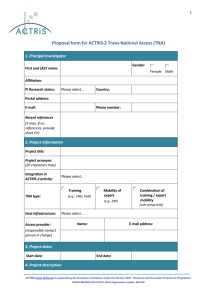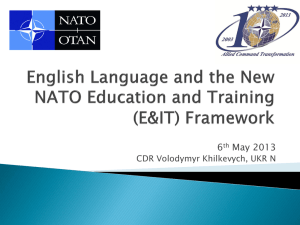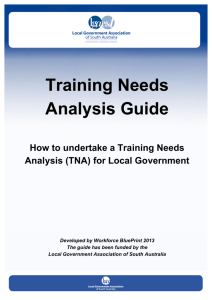Presentation - TNA - PGIS Training Kit
advertisement
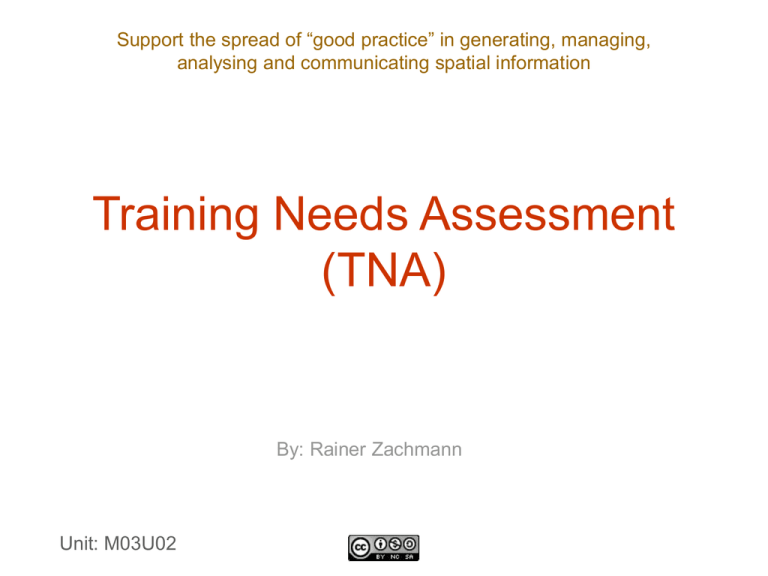
Support the spread of “good practice” in generating, managing, analysing and communicating spatial information Training Needs Assessment (TNA) By: Rainer Zachmann Unit: M03U02 Content • Why assess training needs? • Approach of TNA • Semi-structured interviewing Introduction • Training needs assessment (TNA) gives guidance for a productive training event. • Unit M03U02 helps to plan and implement TNA. Introduction • TNA clarifies whether training is the solution to a problem. • Trainers decide how the factors described are relevant for TNA. Support the spread of “good practice” in generating, managing, analysing and communicating spatial information Why Assess Training Needs? Why assess training needs? • Training on PGIS is diverse and complex. • TNA should be an open-ended, flexible and dynamic process. • A training programme depends on the context. Why assess training needs? • TNA determines the current and desired performance; the difference, or gap, is the needed learning. • TNA includes the political, economic, social and cultural environment and the physical and human resources available. Why assess training needs? • TNA collects information on knowledge, skills and attitudes (KSA) needed for the job. • Participatory involvement of trainees is necessary to ensure a sense of ownership commitment, and accomplishment of objectives. Include relevant stakeholders • Stakeholders help identify: – sources of information; – administrative and technical challenges; – possible obstacles and proposed solutions. What does TNA determine? • Whether there is a real training need. • The root causes of poor performance. • The desired performance level (i.e. the expected results of training). What does TNA determine? • Baseline data for planning content and scope of training. • Possible support from stakeholders, concerned organisations and prospective participants. Support the spread of “good practice” in generating, managing, analysing and communicating spatial information Approach of Training Needs Assessment Relevancy • Trainers decide to what extent these steps are relevant for TNA: – identify stakeholders with relevance to the training process; – ask about their expectations, concerns, suggestions, possible conflicts of interest, etc. – identify challenges that require training. Factors for TNA • TNA depends on: – expertise present; – time available and costs involved; – reliability and importance of information; – number and location of people involved; – confidentiality of data; – culture and social climate within an organisation. Job analysis • Ask about job frequency, importance and difficulties. • Estimate priorities. Interviews • Yield in-depth information, background and suggestions. • Individual interviewing is labour-intensive. • Groups of relevant people may be interviewed together. • Make sure to get viewpoints of everyone, not just of the most outspoken people. Questionnaires • Collect specific information from a large group. • Questionnaires may not allow for free expression. Observations • To assess skills, attitudes and behaviour under real situations. • Observations are time-consuming and labour-intensive. Skills and knowledge tests • Skills tests assess skills. • Inappropriate performance may be due to lack of knowledge. • Knowledge tests complement skills tests. Performance data reviews • Identify possible performance gaps through data reviews. • Insufficient performance may be confounded with external factors that cannot be solved through training. Conclusions • TNA makes sure that challenges can be addressed by training. • Non-training measures may be needed. • Trainers discuss steps with the institutions and people concerned. Support the spread of “good practice” in generating, managing, analysing and communicating spatial information Semi-structured Interviewing (SSI) Interviewing • Interviews are useful for gathering information. • But interviewing requires skills and techniques. Semi-structured interviewing • Semi-structured interviewing requires considerations on: – the art of interviewing; – content of the interview; – guidelines for note taking.
